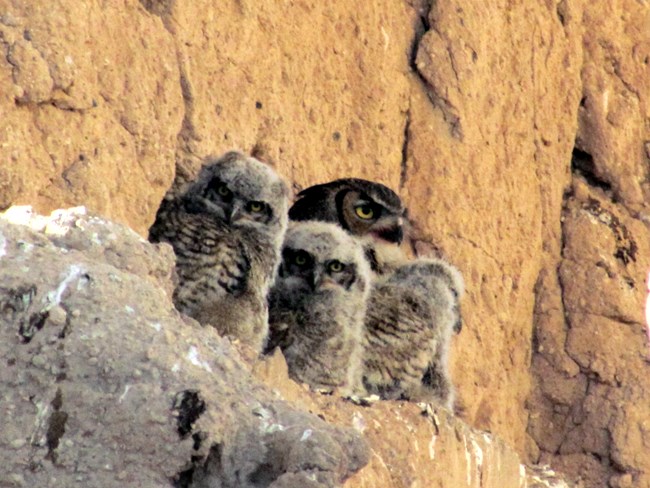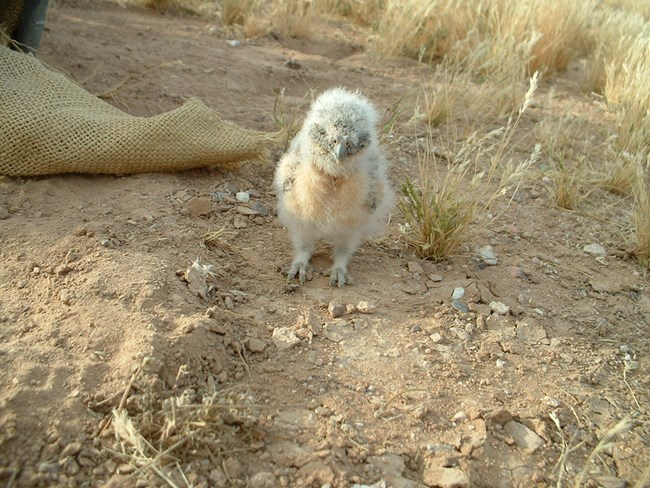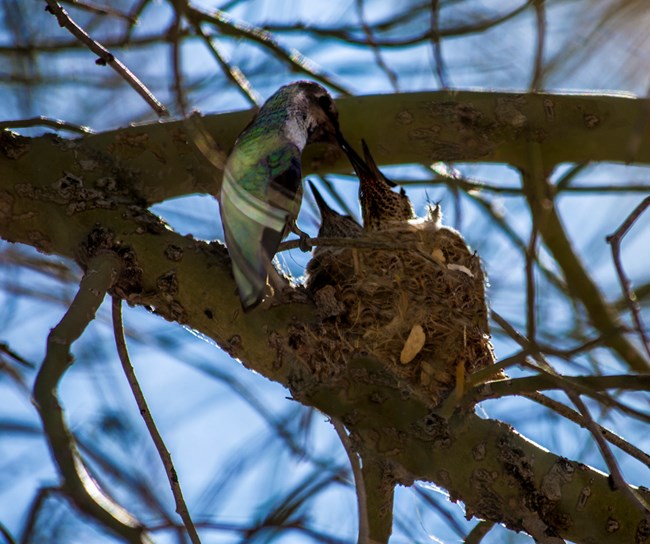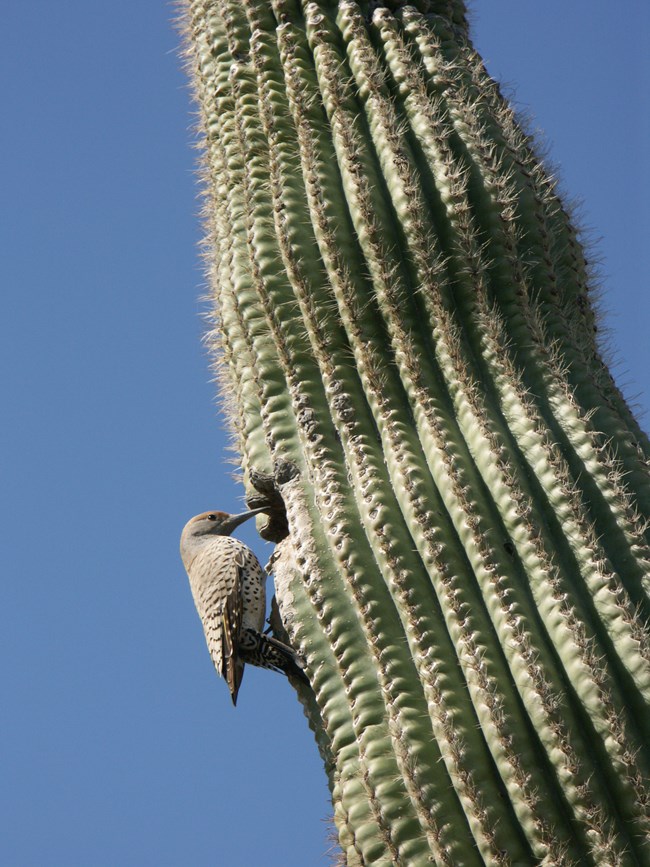
Resident Great Horned Owls had triplets in 2012. There has been a nesting pair of Great Horned Owls in the Great House or the Great House's sheltering roof, since May of 2006. Some years are more successful than others as far as fledglings. 2012 marks the ultimate excitement- three young hatched on the walls of the Great House. In 2009 a nesting platform was installed in the roof structure and the young owls relocated. The adults seemed to accept this change and used the nesting platform in 2010 and 2011. The sudden change in nesting area may be due to unknown factors, or some of our longer term volunteers suggest that the original female owl has been replaced (due to her possible death in late 2011) with a new female. No one knows for certain, perhaps you might make several visits and get involved in solving this mystery? 
Michelle Rogne Western burrowing owls (Athene cunicularia hypugea) live in open grassland and desert areas in the Western US, Canada, and Mexico. They are unique among birds in that they nest underground in existing ground squirrel, coyote, and badger burrows. Burrowing owls are also commonly associated with humans and will frequently nest in burrows along irrigation ditches, canals, and even in people's yards. Unlike other owls, they are typically visible during daylight hours and are easily spotted as they spend much of their time standing or perching near their nest burrow. Their breeding season begins mid-March and extends to late August, when some adults and juveniles disperse from their nest burrow. Some owls will stay in the area year round while others migrate further south for the winter. Burrowing owls typically lay a clutch of 7-10 eggs and fledge an average of 3-4 juveniles per nest. Their diet consists of a variety of insects, frogs, lizards, snakes, birds, and small mammals. Burrowing owls have suffered population declines and range contraction in North America. Burrowing owls are federally endangered in Canada and are listed as a Species of National Conservation Concern in the U.S. Burrowing owls are state endangered in Minnesota and Iowa, and populations have declined in states across the Western U.S. 
Sharp eyed visitors and park volunteers spotted Anna's Hummingbirds nesting near the Visitor Center. They are one of the 18 species of hummingbird found in Arizona. It is not unusual to have a hummingbird flit past you if you visit the park doing the blooming season. The birds are very good at finding ANYTHING blooming so lucky park visitors may spot this tiny wonder all spring and summer long. The Southeastern Arizona Bird Observatory has more information on the birds and studies being conducted to learn more. 
One of the best things about the Sonoran Desert is its signature plant-- the Saguaro. This cactus is interesting in and of itself, but even more so if you see a saguaro "bird hotel." The Northern Flicker is one resident of the saguaro here in Casa Grande Ruins National Monument. As it pecks its way into the saguaro the cactus works to seal the damage creating what is known as a saguaro boot. There is a saguaro boot on the visitor center's touch table so you can examine one closely if you wish. The flicker, however, is unlikely to permit you to examine it too closely. Please respect its privacy and don't attempt to get too close to its home. |
Last updated: February 24, 2015
